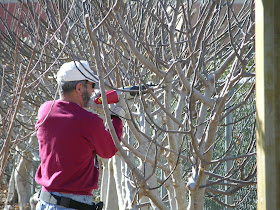Q. What are the year-long
fertilizer requirements for landscape plants ranging from acid loving to desert
lovers such as cacti, palms and other plants to beautify home landscapes.
 |
| Many cactus lovers swear byproducts such as cactus juice but most cacti do quite well with a variety of different types of fertilizers |
A. Desert gardening and horticulture
is more difficult to practice than traditional horticulture talked about on
most blogs, information sheets, YouTube videos, books and other places. Most
information in the media is derived from “traditional horticulture” and these
practices may or may not work in the desert.
 |
| This powdered fertilizer meant for dry or liquid applications has combined fertilizers that create more acidity than some other types. But it has other fertilizers in it as well good for acid loving plants. |
When applying fertilizers to landscapes in desert
climates and soils, consider soil improvement and irrigation beforehand. Soil
improvement, where and when needed, solves many fertilizer issues.
 |
| A good citrus fertilizer that can be mimicked by combining other fertilizers less expensive. But it's convenience and knowledge that make the sale for most homeowners. |
The biggest mistake made by desert horticulturists and
gardeners is a lack of soil improvement to desert soils when and where needed.
Desert soil improvement solves 90% of the fertilizer and irrigation issues in
residential landscapes. Because the majority of plants grown in desert
landscapes are NOT desert plants.
 |
| Compost is a great all around fertilizer for most plants. It contains dozens of different minerals and elements not found in commercial fertilizers. Besides that, good compost is biologically active and help stimulate microorganisms better than commercial fertilizers. |
Spend more money and effort on improving the soil than
buying and applying specialty fertilizers. Improving the soil and using organic
surface mulches around non-desert plants reduces the need for chemical soil
amendments, fertilizer applications and pesticides.
 |
| Called a starter fertilizer because it is high in phosphorus, the middle number. Excellent fertilizer when planting for the first time or seeding in the garden. You can mimic this fertilizer and save a little bit of money but is it worth it? |
With proper soil improvement, here are my recommendations
for fertilizer applications, either conventional or organic:
·
nitrogen and
potassium is needed by all plants on a regular basis
·
apply phosphorous
fertilizers when planting: seed, transplants from containers or bare root,
rhizomes, bulbs or any plant just getting started
·
plants grown for
their flowers or fruit require at least
one fertilizer application of nitrogen plus phosphorus during the growing
season and applied 2 weeks before flowering and fruiting
·
fertilize vegetables
and annual flowers monthly; lawns every 8 weeks
·
fertilize prized
landscape plants more often than “ordinary” landscape plants
·
use specialty
fertilizers on rare occasions for very specific reasons

































